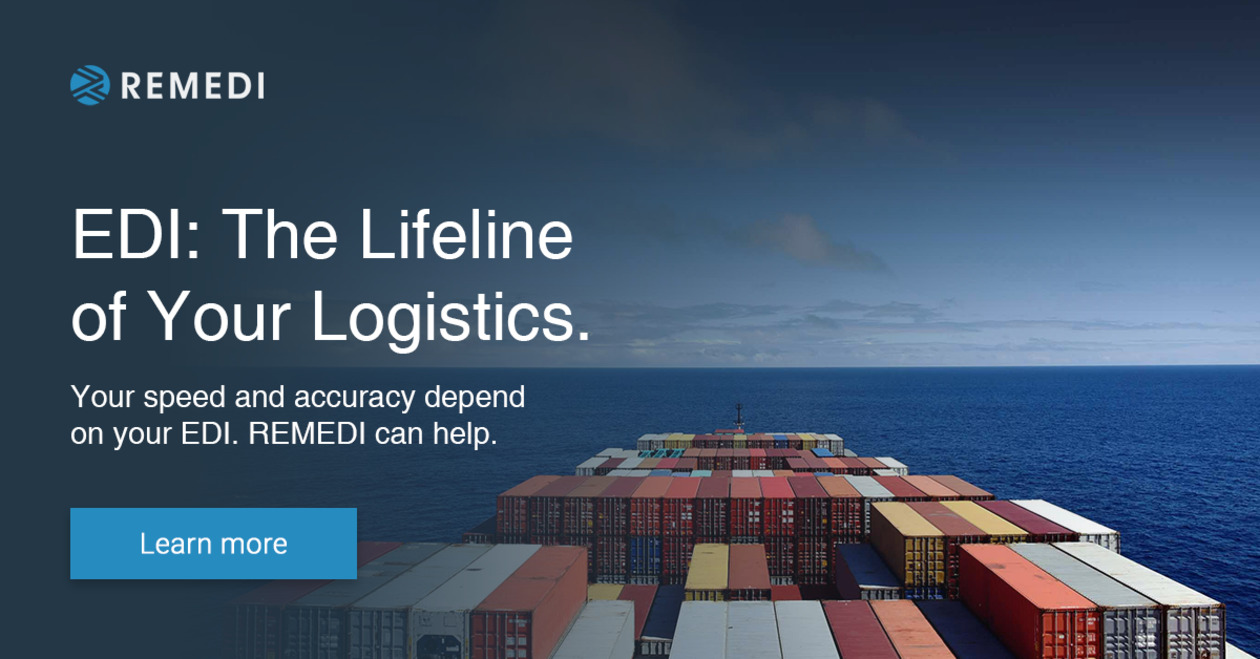
In the freight and trucking industry, timing, accuracy, and responsiveness are everything. Missed pickups, delayed invoices, and endless manual phone calls all chip away at your margins and reputation.
Electronic data interchange (EDI) acts as the digital language connecting shippers, carriers, brokers, and warehouses—replacing paper processes with real-time, standardized communication.
With EDI, you don’t just meet your partners’ requirements. You gain a powerful advantage: faster onboarding, fewer errors, and a stronger customer experience.
Why the Trucking Industry Needs EDI
Trucking companies face rising demands to move goods faster while keeping costs down and providing full shipment visibility. But they operate in a fragmented ecosystem of shippers, 3PLs, brokers, and warehouses—each with different systems, formats, and requirements.
Without EDI, it’s easy to lose track of loads, create duplicate data, or miss delivery deadlines because teams are stuck in manual workflows. Every manual entry presents a risk of mistakes that can delay payments or damage relationships.
Meanwhile, customer and regulatory expectations for real-time shipment status and accurate documentation keep climbing. EDI solves these problems by automating communications and standardizing transactions—so your operations team can focus on moving freight, not chasing paperwork.
Questions about EDI integration and consulting? Ask me anything.
EDI Documents That Power Trucking Operations
At the heart of EDI are standardized electronic documents that replace phone calls, faxes, and handwritten forms. These transaction sets help trucking companies communicate quickly and accurately with shippers, brokers, and other partners.
Below are some of the most common EDI documents used every day in the transportation world—and how they keep freight and information flowing.
|
EDI Document |
Purpose |
Practical Example |
|
EDI 204 – Load Tender |
Shipper offers a load to a carrier. |
Replaces phone calls to dispatchers with a digital, trackable tender. |
|
EDI 990 – Response to Load Tender |
Carrier accepts or declines the load. |
Confirms capacity instantly—no phone tag. |
|
EDI 214 – Shipment Status Message |
Sends real-time updates en route. |
Notifies shipper of pickup, in-transit status, delays, or delivery. |
|
EDI 210 – Motor Carrier Freight Invoice |
Sends billing details after delivery. |
Speeds up invoice-to-cash cycle with clean, verified data. |
|
EDI 997 – Functional Acknowledgment |
Confirms receipt of EDI docs. |
Ensures nothing gets lost in transit. |
|
EDI 211 – Motor Carrier Bill of Lading |
Provides shipping contract details. |
Includes shipper, consignee, goods description, pickup date/place. |
|
EDI 212 – Delivery Trailer Manifest |
Lists trailers or containers in a shipment. |
Helps carriers track equipment and verify delivery details. |
Real-World EDI Impact in Trucking
The real value of EDI comes to life when you look at a typical day for a busy carrier or broker. Without EDI, dispatchers spend hours calling drivers, updating spreadsheets, tracking down shipment paperwork, and manually entering invoice data—leaving plenty of room for delays and mistakes.
With EDI, that same shipment flows automatically: load offers are sent and accepted in minutes, shipment status updates appear in real time, and billing kicks off as soon as delivery is confirmed. Drivers spend less time waiting, dispatchers spend less time chasing information, and accounting teams spend less time processing paperwork.
The result? Fewer missed pickups, faster payments, happier partners, and more loads moved with less effort.
Benefits of EDI
- Reduced manual data entry
- Fewer missed pickups or late deliveries
- Faster dispatch and routing decisions
- Shorter invoice-to-cash cycles
- Better customer experience through reliable status visibility
EDI Integration Challenges for Carriers and 3PLs
Despite its clear advantages, EDI still brings real challenges—especially for trucking companies juggling multiple systems, tight budgets, and busy teams.
Every shipper or broker may use slightly different formats or data requirements, which means custom mapping and testing for each new trading partner. Onboarding a new partner can be painfully slow without the right processes or expertise in place.
Many carriers still rely on older TMS or accounting systems that don’t integrate easily with modern EDI or API solutions.
On top of that, many IT or dispatch teams simply don’t have dedicated EDI specialists on staff—putting the burden of managing day-to-day transactions and troubleshooting issues on people who are already stretched thin.
- Different partners use different formats, each requiring custom mapping.
- Onboarding delays can slow new business if not handled smoothly.
- Legacy systems make integrations time-consuming and expensive.
- Limited in-house EDI expertise, adding risk of delays and data errors.
These challenges don’t mean EDI isn’t worth the effort—far from it. But they highlight why working with a specialized partner like Remedi, who lives and breathes transportation EDI every day, can make all the difference in keeping your operations running smoothly.
Look at how a logistics company used Remedi’s managed integration services to handle Cleo Clarify mapping and ongoing management smoothly.
Making EDI a Competitive Advantage in Freight
The trucking industry is more competitive than ever. New brokers, digital freight networks, and customer expectations mean it’s no longer enough to just have EDI—you have to use it strategically.
When done right, EDI is more than a compliance box to check. It’s a tool that makes your business run leaner, faster, and more profitably. It helps you deliver better service scores, win better freight rates, and build strong partnerships that grow with your business.
With Remedi as your partner, you don’t just meet requirements—you unlock new opportunities to stand out in a crowded market.
How Remedi Supports EDI for Transportation
This is where Remedi makes a real difference. For nearly 30 years, we’ve helped carriers, brokers, and 3PLs modernize how they exchange data and connect with trading partners—no matter how complex their network or legacy systems might be.
Our team works as an extension of yours, bringing the expertise, tools, and capacity you need to simplify EDI complexity, eliminate bottlenecks, and keep freight and payments moving.
Our transportation clients rely on Remedi for:
- Designing and implementing custom EDI workflows that integrate seamlessly with your TMS and back-office systems.
- Accelerating partner onboarding, from mapping requirements to testing and go-live support.
- Fully managed EDI monitoring and support, so your staff isn’t bogged down resolving transaction errors or downtime.
- Flexible hybrid integration solutions, combining EDI with APIs and cloud applications to keep your network modern and scalable.
When you partner with Remedi, EDI becomes more than a requirement—it becomes a competitive advantage.
Still have questions? See our Frequently Asked Questions below.
Ready to Modernize Your EDI?
When your EDI is frictionless, your business moves faster. If you’re ready to automate manual processes, reduce errors, and get paid faster, connect with Remedi. Our EDI experts can optimize your workflows, onboard new partners quickly, and manage the entire integration—so you stay focused on moving freight, not chasing paperwork.
Contact us today to get started.

Frequently Asked Questions About EDI in Trucking
What is EDI in trucking? Electronic Data Interchange (EDI) is the electronic transfer of business documents between shippers, carriers, and brokers in a standardized format. It replaces paper forms, phone calls, and manual data entry.
What are the most common EDI documents used by carriers?
The most common include the EDI 204 (Load Tender), EDI 990 (Response to Tender), EDI 214 (Shipment Status), EDI 210 (Freight Invoice), and EDI 997 (Acknowledgment).
How does EDI improve shipment visibility?
EDI automates real-time status updates through EDI 214 messages, so shippers and customers always know where a load is—without endless phone calls.
How can small carriers use EDI?
Many smaller carriers use a third-party EDI provider or a managed service to handle setup, mapping, and monitoring—so they can compete with larger fleets without heavy IT costs.
What happens if an EDI document has errors?
With proper validation and acknowledgments (like the EDI 997), errors are flagged automatically. Many companies use managed EDI services to monitor and resolve issues quickly.


